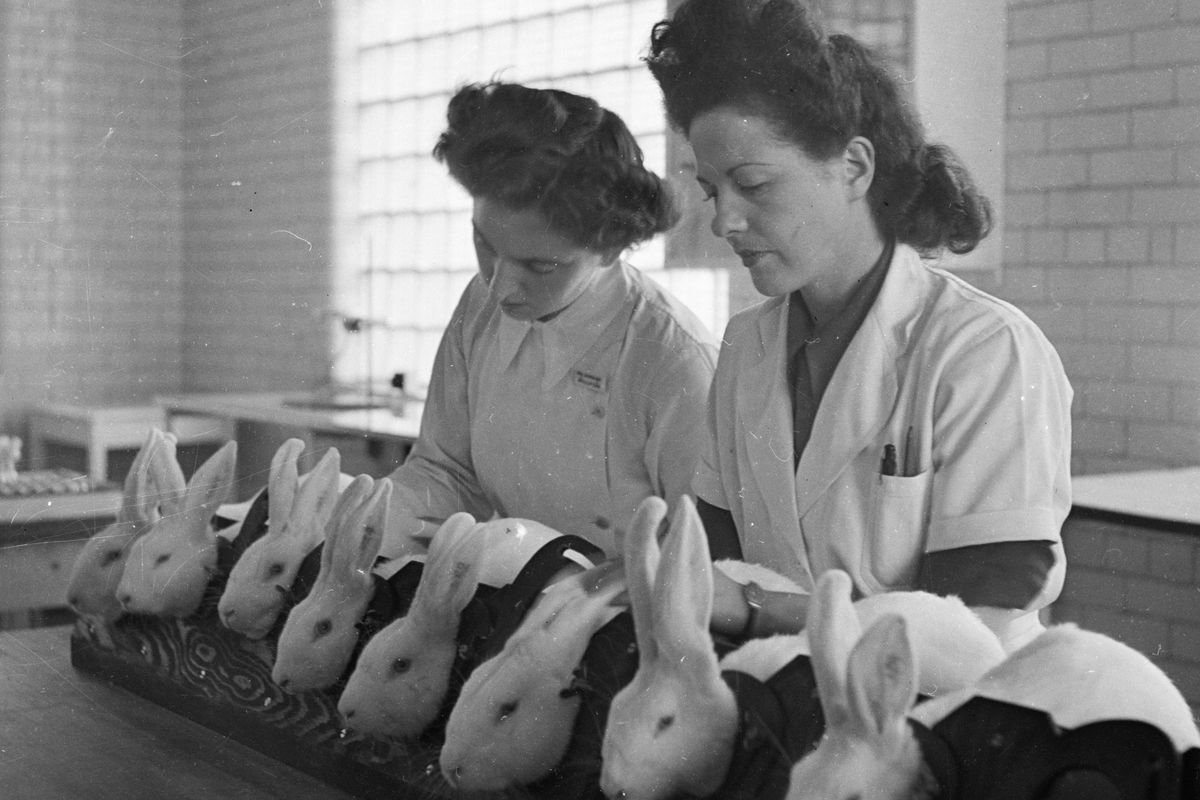Yep, not even kidding. Back in the 1930s, scientists developed special tests using animal or live tissues to identify a hormone most prominently found in pregnant women. This was known as the A-Z test, after its developers Selmar Aschheim, a German chemist, and Bernhard Zondek, a gynecologist.
This test was done to identify a hormone, called human chorionic gonadotropin or hCG, that’s found prominently in pregnant women. In this test, a female South African clawed frog was injected with a woman’s pee, and if it laid eggs in the next 8-12 hours, the woman was considered pregnant.

The test also worked with male African clawed frogs, which produce sperm in the response to the injection.
The A-Z test started with the developers injecting five mice with a woman’s urine over several days, then they’d kill the mice, dissect them, and examine their ovaries—enlarged or congested specimens would signal a pregnancy.
After a few years, a better test was developed, which used rabbits and was about 98% accurate. This test led to women euphemistically claiming “the rabbit died” when referring to their pregnancy.

Even today, most modern pregnancy tests involve detecting the presence of hCG in urine to determine pregnancy in a woman.

















